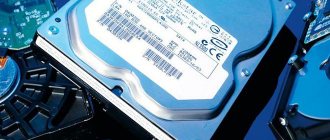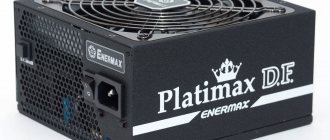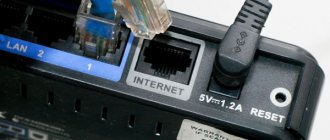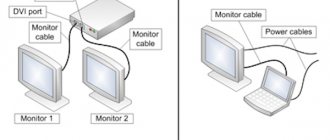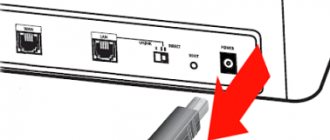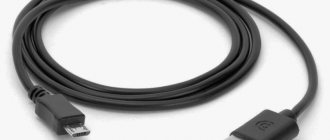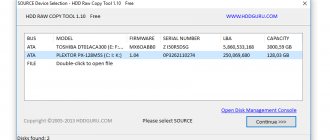Great Beginning
As it turns out, “ancient” computers appeared back in the 1940s. Then many developers, independently of each other, created large-sized computing devices. They were created and collected by American scientists. The size of the computer “firstborns” was impressive - several tens of square meters. Such dimensions do not fit into modern ideas about a PC. But at that time there were no more powerful devices to perform various calculations at a speed that would exceed the results of the average person.
The first computers of the twentieth century
Despite the fact that the first development was created a very long time ago, a full-fledged computer was assembled only in 1938. The very first electromechanical binary machine was introduced to the world, and it was invented by Konrad Zuse, a scientist from Germany.
He called this computer Z1, but in the same year another device was built that emulated human actions, which followed a certain algorithm of instructions, and all the results obtained were displayed on a paper tape. This device was called a Turing machine, as it was invented by another scientist, Alan Turing.
New steps
At the end of 1945, a new device was launched for the first time, called "Eniak", it was intended to perform approximately the same work as the first Mark, but in the end it turned out to be a kind of multitasking device. It was too late to use it for World War II, so he began to work in other directions. One of them is the process of visualizing the explosion of a hydrogen bomb. Another giant computer had more than seventeen thousand lamps in its design. These elements operated at a frequency of one hundred thousand pulses every second.
To increase the reliability of such a number of devices, the creators used the method used for electric organs in the music industry, thanks to which the accident rate was reduced several times at once, for example, out of 17 thousand light bulbs, no more than 2 burned out in a week. In addition, a special device safety monitoring system was created, it involved testing each of one hundred thousand small elements.
Computer specifications:
- In total, it took 200 thousand man-hours to create;
- Project cost: $487,000;
- Weight - approximately twenty-seven tons;
- Memory – twenty combinations of numbers and letters;
- Operating speed: addition – 5000 operations per second, multiplication – 357 per second.
The operating speed and capabilities of the Eniak were considered unique at one time; the most serious and only disadvantage of this machine can only be called its dimensions - they were almost twice the size of its predecessor Mark-1; as for the computing process, it was accelerated hundreds of times.
Eniak used a huge amount of energy, so during its operation the city closest to it suffered from a lack of electricity, people were often left without power for hours. This unit has been in operation for more than 10 years.
Konrad Zuse: the dreamer who created the first computer
The Second World War gave a powerful impetus to the development of technology and science. The military-industrial complex has always collected enormous human, monetary and other resources. And the Nazis, in their obsession with world domination, worked especially zealously on inventions and scientific and technological innovations. Nevertheless, the history of the creation of the first programming computer began even before the war, with the usual desire of one German architect to simplify his life.
Konrad Zuse (1910-1995)
The German engineer and inventor of the world's first working programmable computer, Konrad Zuse, got into the world of information technology almost by accident.
The future inventor was endowed with good abilities in the visual arts, and also loved construction and design. Therefore, he entered the Technical University of Berlin at the Faculty of Architecture and Civil Engineering (1930-1935), where he became interested in mathematics and physics. During his studies, studying the construction of buildings and roads, Zuse encountered a serious problem. This type of construction required solving huge systems of linear equations that were very difficult to calculate using a slide rule or even a mechanical calculator of the time. As Zuse recalled: “I was a student in civil engineering in Berlin.
Berlin is a beautiful city that offers many opportunities for a young man to have a good time, for example, with a pretty girl. But instead we were forced to make huge and terrible calculations.” For such miscalculations, engineers used special tables where they wrote down formulas for performing basic operations in the binary number system. It was then that Zuse had the idea to automate this process using a simple computing device. In other words, to invent the first programmable binary computer.
(photo of Z1 binary programmable computer)
Through hardship to the stars
In 1936, Zuse completed the logical plan for his first computer, the V1 (from the German Versuchsmodell-1, meaning "experimental model"). In fact, the names of all the machines were supposed to begin with V (V1 to V4), but after World War II he changed the names to Z1-Z4 (the initial letter of the inventor's surname) to avoid unpleasant associations with V1-V4 military missiles.
(outline plan)
Zuse had no experience in the field of electronics, did not have sufficient knowledge in the field of mechanics and, of course, could not know the principles of operation of other computing devices. But these circumstances did not bother him. The young inventor immediately began implementing his idea. With the help of friends, he collected a small amount of money for research and, together with several friends, began work. The development and assembly process took place in his parents' Berlin apartment - the home living room turned into a real workshop. No specially equipped laboratories, no help from the government, ministries or universities. Conrad did everything himself, creating his computer from practically nothing. On the other hand, perhaps it was precisely this circumstance that gave him an advantage, since he was able to look at issues of machine arithmetic differently and find a new approach to solving certain problems. The inventor later wrote that due to ignorance, he was not limited in his search for the best system for automatic calculations. Having tried the decimal system, Zuse settled on the binary system.
(Zuse at work)
The computing mechanisms that existed at that time were built using rotating elements and operated with values in the decimal number system. The peculiarity of Z1 was that it processed numbers in a binary system and used metal plates rather than relays for switching. It should be noted that these plates were cut by Zuse and his friends by hand, using an ordinary jigsaw (2000 pieces!). The plates moved in a strictly defined direction. Displaced plates indicating the values of calculated quantities and mathematical operations moved a number of other plates that changed the register of binary numbers and stored the intermediate result. The data obtained allowed other transformations to be made. In fact, the simple sequential calculation algorithm specified by the operator was the prototype of a modern computer program. A notable feature of the first computer was a data entry keyboard with flashing lights to indicate results.
Work on the invention took more than two years. In 1938, the Z1 car was released. It was huge, consisting of 20,000 parts. Electric motor 1 kW. provided a clock frequency of one Hertz (one cycle per second).
Key Features of Z1
Implementation:
thin metal plates
Frequency:
1 Hz
Computing unit:
floating point processing
Average calculation speed:
multiplication - 10 seconds, addition - 5 seconds
Data input:
keyboard, punched tape reader
Data output:
lamp panel (decimal notation)
Memory:
64 words 22 bits
each Weight:
about 1000 kg
Zuse's first device did not have the ability to "save a program." The conditional branch command was also missing. But is it worth asking for more from a machine built from metal plates and having 64 words of memory? In addition, Zuse himself developed the theoretical foundations for his computers. He was familiar with Leibniz's binary digital system. But I had no idea about George Boole's algebra. He had to study the mathematical logic of many eminent scientists in order to develop his own system, calling the notation “Conditional Combinatorial” (Bedingungskombinatorik).
(working living room)
Zuz's mechanical device had great scientific value, proving the possibility of creating software computers that worked with binary code. But the reliability of the car left much to be desired. The device constantly broke down due to poor quality components. When operating the processor with memory, there was a problem in the synchronization required to prevent excessive mechanical stress on the moving parts. But the architecture of the invention seemed quite successful and prompted Zuse to consider other types of technology.
Further work on the car was greatly influenced by Zuse's friend, electronics engineer Helmut Schröer. He appreciated the development and proposed to improve it by replacing the plates with vacuum tubes. And when creating a new model, retain in it the logical principles of the previous one, allowing operators to perform mathematical operations with decimal numbers.
In 1938, Zuse and Schröer gave a demonstration of electronic circuits at the University of Berlin, detailing the construction of an electronic computer. But as soon as they mentioned that such a device would require about 2000 radio tubes and several thousand incandescent light bulbs, they were almost ridiculed. University scientists classified the idea as the fantasy of two dreamers. The fact is that the largest electronic devices of that time consisted of only a few hundred vacuum tubes. But the professors’ criticism did not influence the friends’ decision to carry out their plans and assemble a new model.
(friends-scientists Zuse and Schroer)
In an attempt to find financing, Zuse tried to sign a contract with former mechanical calculator manufacturer Kurt Pannke. To which I received a polite refusal. Pannke expressed confidence that everything possible had already been invented in the field of computers. However, the former calculator manufacturer agreed to visit Zuse's workshop and was so impressed by his work that he decided to give the inventor seven thousand Reichsmarks.
The pursuit of excellence
The outbreak of World War II put an end to joint research, and Zuse was drafted into the Nazi army. He spent less than six months there. Thanks to the petition of influential engineers and scientists, Zuse was demobilized in 1940 to Berlin, where he became a member of Hitler's scientific elite.
Work on the creation of a relay electronic computer has resumed. Schroer again offered his services. The scientists turned to the military leadership for financial support, proposing to develop a modern device for the German Air Force. Such a machine could quickly process complex calculations, thereby increasing the effectiveness of tactical aviation. According to preliminary estimates by scientists, it would take about two years to invent such a device. But the military refused. The Wehrmacht leadership was convinced that within such a period, Nazi Germany would already achieve world domination.
Without losing hope, the scientists turned to the directors of the Berlin Aviation, which produced tactical bombers. And finally received approval, the plant management seized the opportunity to use computer technology in the process of creating military equipment. Zuse was given a special department with the company's best electronics engineers. And already at the end of 1940 Z2 was put into operation. The new computer was equipped with a digital processor based on relays and vacuum tubes. It automatically calculated a number of parameters of the geometry of aircraft bomb stabilizers, converted their analog value into the binary number system, calculating the necessary data using formulas previously entered by the operator, and produced the finished result in the form of decimal numbers. The results were sent directly to the production floor.
In the same year, Zuse began development of the Z3, a machine built entirely on relays, but with the logic structure of Z1 and Z2. It was ready for operation in 1941, 4 years before American scientists developed the ENIAC electronic digital computer.
The Z3 programmable computer was created on the basis of electronic relays (600 for the arithmetic device, 1400 for the memory and 400 for the control unit). In all other respects it resembled Z1 and Z2: binary number system, floating point numbers, arithmetic unit with two 22-bit registers, control via 8 channel tapes (i.e. the command consists of 8 bits). Each of the words could be placed in the computer's memory in one clock cycle. The total shared memory reached 64 words of 22 bits. It was this machine that first applied the modern principle of addressable memory allocation, when each 22-bit word can be placed in memory or retrieved from it using the PRz and PSz commands (z is the corresponding register of the random access memory with addresses from 1 to 64). The arithmetic module of the computer consisted of parallel adders, which were used to process logarithmic expressions and floating point numbers.
Zuse developed his own set of instructions, which included about ten main and several dozen additional commands. It was a real programming language used to specify complex calculation algorithms. So Zuse is also credited with creating the first high-level programming language - Plankalkül (in German Plankalkül - “calculus of plans”). Its characteristic features were: free portability (independence from the architecture and instruction set of the machine), conditional operators (except ELSE), loops, subroutines, lack of recursion, working with arrays and subarrays, as well as complex syntax
The Z3 entered service in December 1941 and was immediately adopted by military aircraft manufacturers. It was with the help of Z3 that the aerodynamic and ballistic characteristics of the first German cruise missiles were calculated.
Following the successful introduction of the Z3 into the military industry, Zuse was awarded a contract by the German Air Force Research Office (DIV) to design a new generation of electrical computers.
(Zuse in front of Z3)
The long-awaited Z4
The new model was very similar to the Z3, incorporating all of Zuse's improvements. This computer included the elements: 2500 relays, 21 stage relays. It already had 1024 memory registers for storing 22-bit words. Thanks to a more powerful processor, the speed of converting binary numbers has increased. Z4 had a program preparation device. He also knew how to avoid calculating incorrect results. The power consumption of the machine was 4 kW.
The creation of a new computer took three years and by December 1944 the project was nearing completion. While working on the Z4, the inventor's main goal was to build a prototype of a machine that could later be produced in the thousands. But the lack of necessary materials and the difficult situation in the country (the height of hostilities) made this task almost impossible. During one of the air raids on Berlin, the first copy of the Z3 was completely destroyed, and when the Soviet army entered the German capital in May 1945, Zuse was forced to flee with his family to Bavaria. Of course, he took with him the already assembled Z4 computer. In the Bavarian Alps he hid the car until calmer times.
Key Features of the Z4
Implementation:
Relays, memory - metal plates
Frequency:
30 Hz
Computing unit:
floating point processing, machine word length - 32 bits
Average calculation speed:
0.4 seconds for addition, 0.3 seconds for multiplication
Average calculation speed:
11 multiplication operations per second
Data input:
decimal keyboard, punched tape reader
Data output:
Mercedes typewriter
Memory:
64 words x 22 bits
Weight:
about 1000 kg
(computer Z4)
In 1948, Zuse contacted Professor Eduard Stiefel, who recognized the Z4 as suitable for scientific calculations. Despite the machine's slightly old-fashioned technology, Stiefel was impressed by the ease of programming and the power of the arithmetic unit with its exception handling ability.
Encouraged by the success, Zuse created his own company, Zuse KG. In fact, it was the world's first commercial company exclusively engaged in the development and production of computer technologies for the aviation and optical industries, and university laboratories. The company launched the production of commercial computers that were popular in Germany in the 50s (Z5, Z11, Z22 and Z23). The Zuse company created the first computer with magnetic memory, the Z22.
(computer with magnetic memory Z22)
Despite his engineering talent and diligence, Zuse lagged behind his American competitors. Post-war Germany was not the best place to innovate into an electronic future. All government funds were used to restore the country. And Zuse did not have the infrastructure necessary for further development. He could not learn about new devices and programs in a timely manner.
And already in the 60s, the European market was actively filled with American electronic computers, which gradually replaced Zuse computers. In 1962, the company was sold and subsequently became part of the Siemens corporation.
Konrad Zuse called himself an apolitical person. He considered the development of computer technology in Germany his life's work and regretted that he never realized his dream of creating a portable personal computer for business people. American developers were ahead of him in this. After selling the company, he took up his long-time hobby - painting. And he even painted several portraits of famous people in the world of computer technology. One of them was Bill Gates, whom Vuse met at the exhibition.
(Zuse at his second favorite pastime)
Konrad Zuse died in 1995 in the city of Huhnfeld (Germany), having lived to the age of eighty-five.
The originals Z1, Z2 and Z3 have not survived to this day; they were destroyed during the bombing of Berlin in 1945. But Zuse managed to save the Z4 computer, which is located in the inventor’s homeland in the Technical Museum in Berlin.
The California Computer History Museum in Mountain View posthumously inducted Konrad Zuse into its membership as the preeminent inventor of the first fully automated, program-controlled computer.
First sales
Thanks to the introduction of the microprocessor, the development of new PCs began to take less and less time. Back in 1974, IBM was going to market the device, but there were practically no sales. The computers of this manufacturer were equipped with cassettes used for storing data, so the price for the very first computer in the world was impressive - 10 thousand dollars. Only a few could afford such luxury.
The IBM 5100 was capable of running some programs and had 64 KB of memory. The cassettes resembled the audio cassettes we know. It is clear that the level of sales was influenced not only by the high cost, but also by the primitive and poorly thought-out interface. Although there were still people who found the money to buy it, thereby starting a new era in the history of the world market - the sale of PCs.
The very first computer officially recognized
The officially registered very first computer is considered to be the Mark-1 programmable machine. Initially, her main goal was to serve for the benefit of the military. After a series of tests, which were successful, the computer was put into operation in 1944.
It was created by IBM engineers and Harvard mathematician Howard Aickson. They took the work of Charles Babbage as a basis and began assembling it on the territory of that same Harvard.
The world was presented with both the very first computer and the most expensive one - its price was 500 thousand dollars. The device consisted of more than 760,000 parts, its length was 17 m, and the body was made of glass and stainless steel. Considering the height of 2.5 meters, it was decided to allocate a separate room for it.
As for the remaining characteristics of the very first computer (electronic computer), they are as follows:
- Weight - more than 4.5 tons.
- The total length of cables inside the very first computer was 800 km.
- The length of the synchronizing shaft is 15 meters.
- The power of the electric motor that was used to start the machine is 5 kW.
Some inventors saw the first computer as a large and powerful adding machine. This opinion was held by those people who believed that the ENIAC device became the impetus for the development of all further computers. But the one who invented the Mark-1 is still considered its founder, thanks to the machine’s ability to automatically perform the required tasks.
Note!
Carrying out its work using punched paper tape, the first automatic device required virtually no human intervention in its operation.
The main advantage of the Mark-1 was the ability to perform the following tasks:
- Division – 15 sec.
- Addition and subtraction – 0.33 sec.
- Multiplication – 6 sec.
- Ability to operate with 72 numbers.
But soon the characteristics of the computer did not meet the inflated requirements of customers, so Howard Aiken proposed creating computers of a more powerful and modern type. After that, scientists released 3 more versions of one of the very first computers, the last model of which was created in 1952.
Domestic successes - the very first computer in the world... or not?
The Soviet Union also carried out developments to create computers. The result of the work was the first model in Eurasia, created in the laboratory named after. S.A. Lebedeva. After it, several other units were developed, which were no longer so well known, although they made a significant contribution to the scientific activities of the Union. The small electronic calculating machine, MESM, got its name due to the fact that it was a model of a “large” apparatus.
During the tests, positive results were obtained and in November 1950 the first full-fledged computer was launched. Over the next six years, the device was used for complex calculations in the field of science, and after that it was used as a teaching aid, and only 9 years after its creation the machine was dismantled. Are you interested in learning about the operating parameters of the Soviet device? I won’t languish for too long, they were as follows:
- 6,000 lamps;
- permanent memory for thirty-one numbers and sixty-three commands;
- frequency – 5 kHz;
- three-address command system and 20 binary digits;
- 3000 operations were performed per second;
- area approximately sixty squares.
Quantum computer
Everyone already roughly understands when the first computer appeared, but what about a quantum device? A pleasant surprise was the recent development of Russians and scientists from America. For the first time in the world, they were able to assemble a quantum computer and successfully test it.
At the moment, a more complex quantum device has not yet been created. This kind of large-scale achievement allowed Russian scientists to become leaders in the race to create a full-fledged quantum machine.
Such devices are special computing mechanisms that consist of qubits, in this case 51 pieces, and standard modules for calculations - they store a spectrum of values found in the interval between 0 and 1.
Several other scientists from different countries were preparing to create such a quantum computer. It was believed that the person closest to its creation was Google representative John Martinis.
But still, Russian scientists, together with the Americans, were able to get ahead of everyone. They noticed that sets of atoms that are held inside laser cages and have a very low temperature could be used as quantum qubits. It was the use of this technology in a quantum device that could bring domestic scientists to a leadership position in the global market.
It is not yet known what the situation with the cost of such a machine will be, but one cannot yet expect a low price, given the capabilities and complexity of the device.
EAI Pace (TR 48)
The EAI Pace is a “desktop” computer created in the early 1960s. True, the device, 1.2 m wide and 0.6 m high, differs significantly from modern desktop systems. Depending on the configuration, the weight of the computer ranged from 145 kg to 193 kg. Essentially, the EAI Pace is a table that can hold up to six overhead boards.
The TR 48 was the most complete analog desktop computer of its time and was even used as part of NASA's Apollo program.
First mention
The word "computer" was first documented in 1613 and meant a person who performs calculations. But in the 19th century, people realized that a machine never gets tired of working, and it can do work much faster and more accurately.
To begin counting the era of computing machines, the year 1822 is most often taken. The first computer was invented by the English mathematician Charles Babbage. He created the concept and began manufacturing the difference engine, which is considered the first automatic computing device. She was capable of counting multiple sets of numbers and making a printout of the results. But, unfortunately, due to funding problems, Babbage was never able to complete its full version.
But the mathematician did not give up, and in 1837 he introduced the first mechanical computer, called the Analytical Engine. It was the very first general purpose computer. At the same time, his collaboration with Ada Lovelace began. She translated and supplemented his works, and also made the first programs for his invention.
The Analytical Engine consisted of the following parts: an arithmetic-logical unit, an integrated memory unit and a device for monitoring the movement of data. Due to financial difficulties, it was also not completed during the scientist’s lifetime. But Babbage's designs and designs helped other scientists who created the first computers.
Harwell Dekatron
The Harwell Dekatron, also known as the Wolverhampton Instrument for Teaching Computing from Harwell (WITCH), was created in the UK in the 1950s. Its operation was based on a relay and its weight was 2.7 tons. Harwell Dekatron has twice been included in the Guinness Book of Records as the oldest working digital computer. The Harwell Dekatron is now kept in the UK's National Computing Museum.
First commercial samples
With their enormous dimensions and design complexity, computers were available only to military departments and large universities, which assembled them themselves. But already in 1942, K. Zuse began work on the fourth version of his brainchild, Z4, and in July 1950 he sold it to the Swedish mathematician Eduard Stiefel.
And the first computers that began to be mass produced were models with the laconic name 701, produced by IBM on April 7, 1953. A total of 19,701 of them were sold. Of course, these were still machines intended only for large institutions. In order to become truly widespread, they needed a few more important improvements.
So, in 1955, on March 8, the “Whirlwind” went into operation - a computer that was originally conceived during the Second World War as a simulator for pilots, but by the time of its creation it arrived in time for the beginning of the Cold War. It then became the basis for the development of SAGE, an air defense subsystem designed to automatically target interceptor aircraft. The key features of the Whirlwind were the presence of 512 bytes of RAM and the display of graphic information on the screen in real time.
Technology to the masses
The TX-O computer, introduced in 1956 at MIT, was the first to use transistors. This made it possible to greatly reduce the cost and dimensions of the equipment.
The team of scientists who developed the TX-O then left the institute, founded Digital Equipment Corporation, and introduced the PDP-1 computer in 1960, ushering in the era of minicomputers. They were no larger than one room or even a closet, and were intended for a wider range of clients.
Well, the first desktop computers began to be produced by Hewlett Packard in 1968.
